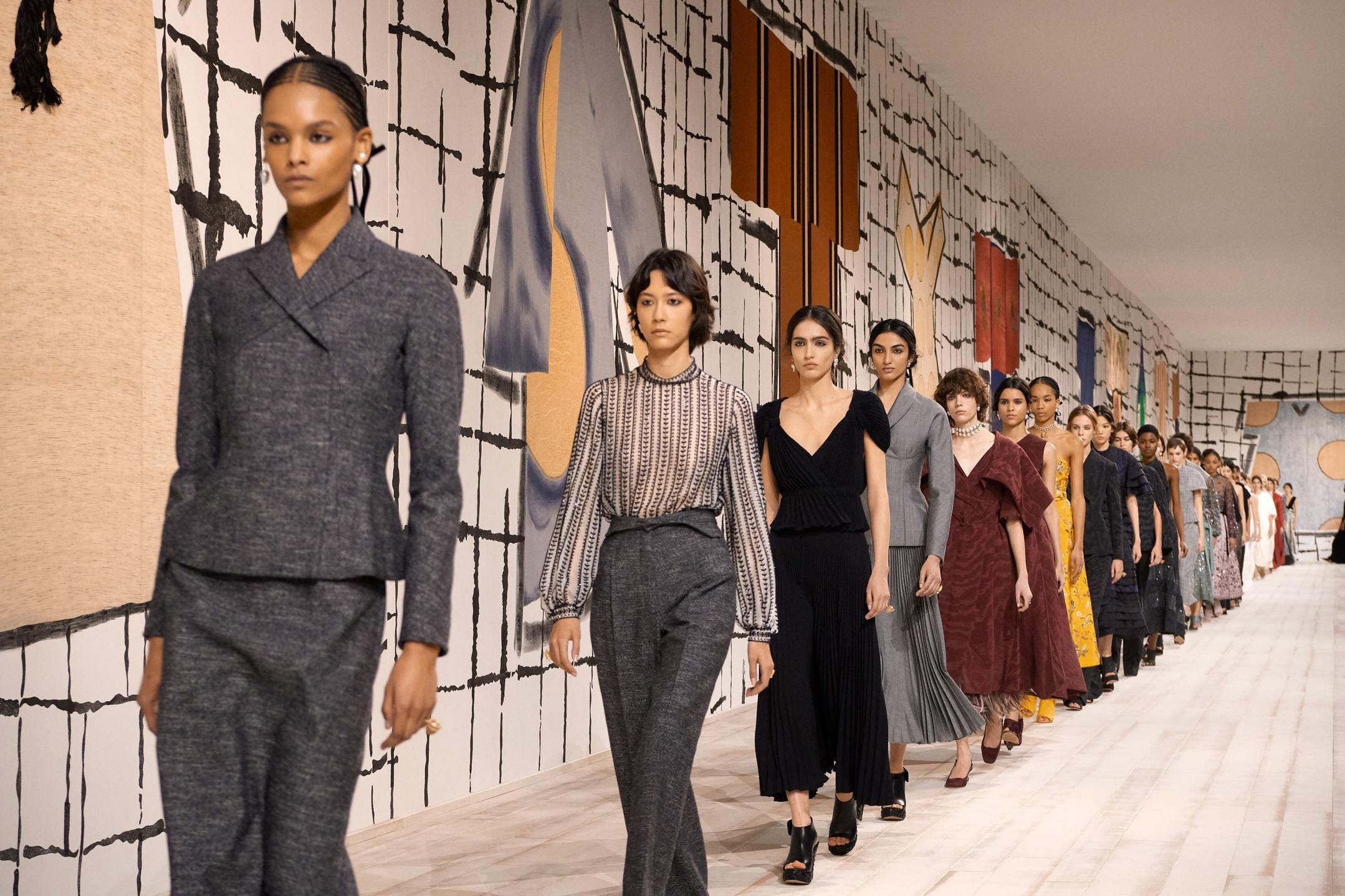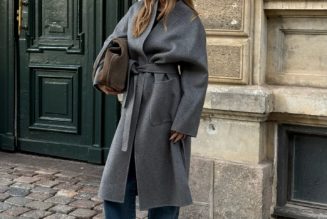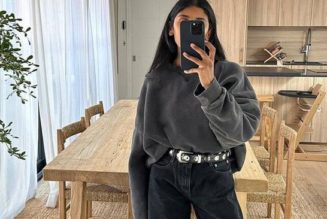
Christian Dior Spring ‘24 haute couture exalted craftsmanship and humanity and the transformative power of clothing.
Of the show’s 59 looks, nine were conceived in beige trench fabric—both as coats, but also taking the form of asymmetric day dresses, bustiers and pants—the ultimate in quiet luxury.
Creative director Maria Grazia Chiuri’s silhouettes revisited details of dresses from the Dior archives such as the La Cigale dress which Christian Dior designed in 1952— “the starting point for a theory that recontextualizes couture”—creating contemporary looks for the modern woman rooted in the maison’s heritage.
Notably, for the first time in its history, Dior has two women at its helm—in both design and business capacities—Maria Grazia Chiuri, and, as of January last year, Delphine Arnault as CEO.
While a more humble fabric than the elaborate silk tulles embroidered with rock gardens and waterfalls in smoky silver tubes or satin organza embellished with hammered faded silver sequins, the purity of the trench looks highlighted the undeniable savoir-faire of the ateliers when it comes to pattern cutting—the foundation of couture in its simplest form.
Christian Dior couture offered a contemporary take on archive silhouettes.
The show which took place at Paris’ Rodin Museum, opened with a reading of a poem by Patrizia Cavalli entitled, “To Weave Is Human” underlining the hand craftsmanship that distinguishes haute couture.
In the age of artificial intelligence and fast fashion, couture increasingly has to justify its existence but taken together, the craftsmanship and human touch evident at Dior make for a compelling case.
As well as underscoring the power conferred by simplicity, the collection’s backdrop—a monumental installation entitled “Big Aura,” composed of 23 five-meter high dresses, made a broader statement on the transformative nature of clothing.
The set was conceived by Italian-born visual artist Isabella Ducrot and embroidered by the Chanakya & Chanakya School of Craft. Ducrot, who has a particular interest in fabrics from China, India, Turkey and Central Asia, drew on the ceremonial garments of the sultans of the Ottoman Empire which she first encountered in the Topkapi Palace museum in Istanbul.
Writing in the show notes, she said she had been “deeply struck” by their size. “It seemed to me that this excessive size, this disproportionate spatial exuberance was there to magnify and reflect the immense power of the sultans. All of this had been achieved without recourse to precious fabrics: no brocade, no pearls, no precious stones, just disproportionate dimensions.”
The installation which was set against a grid pattern of black lines on a white background—a signature of the artist—has political connotations, honoring its association with manual or domestic workers. For “Big Aura,” it also represents warp and weft—the foundation of textile itself.
“Unlike the proverb ‘clothes don’t make the man,’” Ducrot added, “I was convinced the opposite was true: these exaggerated dimensions had ensured grandeur, dignity and sacredness for those who had worn them over the centuries, even when they had fallen from grace.”
Notable guest of the maison, Rihanna, is herself no stranger that the transformative nature an oversized garment can bestow on a female powerbroker too.
Rihanna at Christian Dior haute couture spring ‘24.









